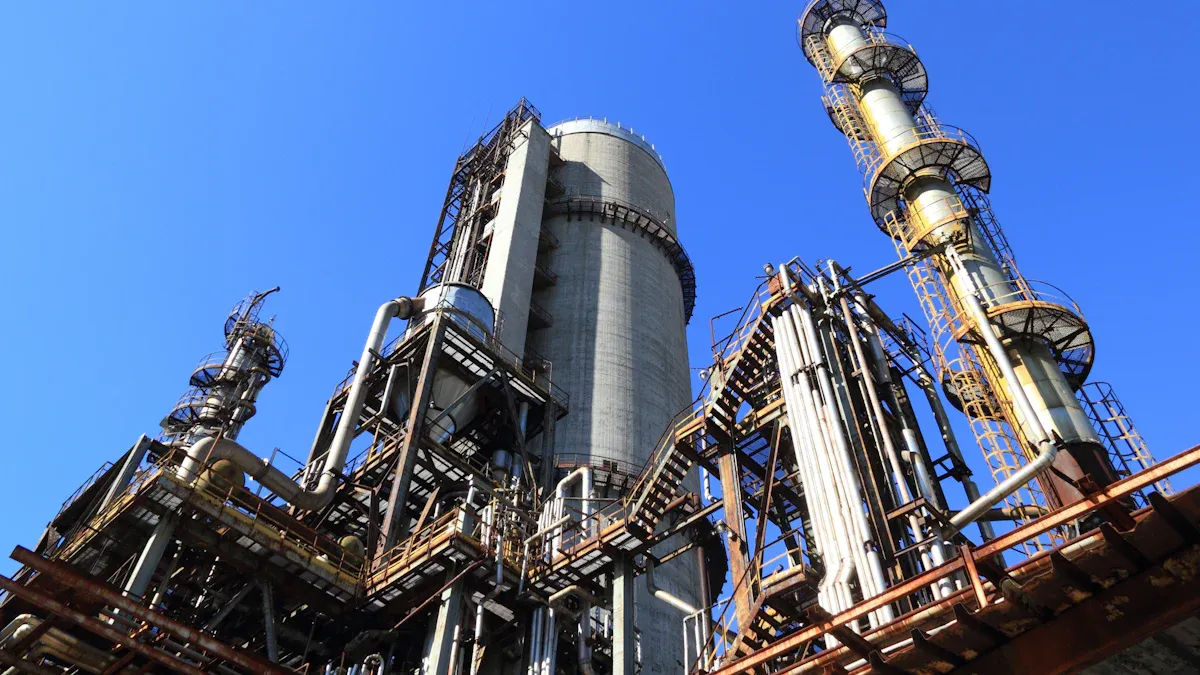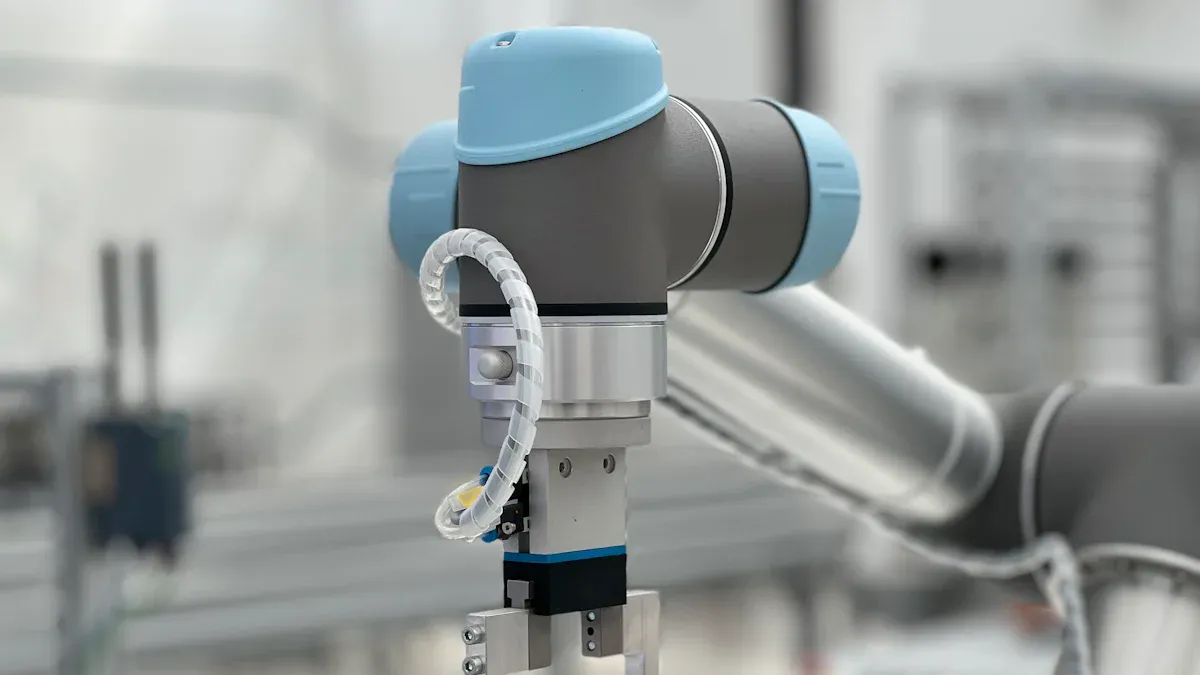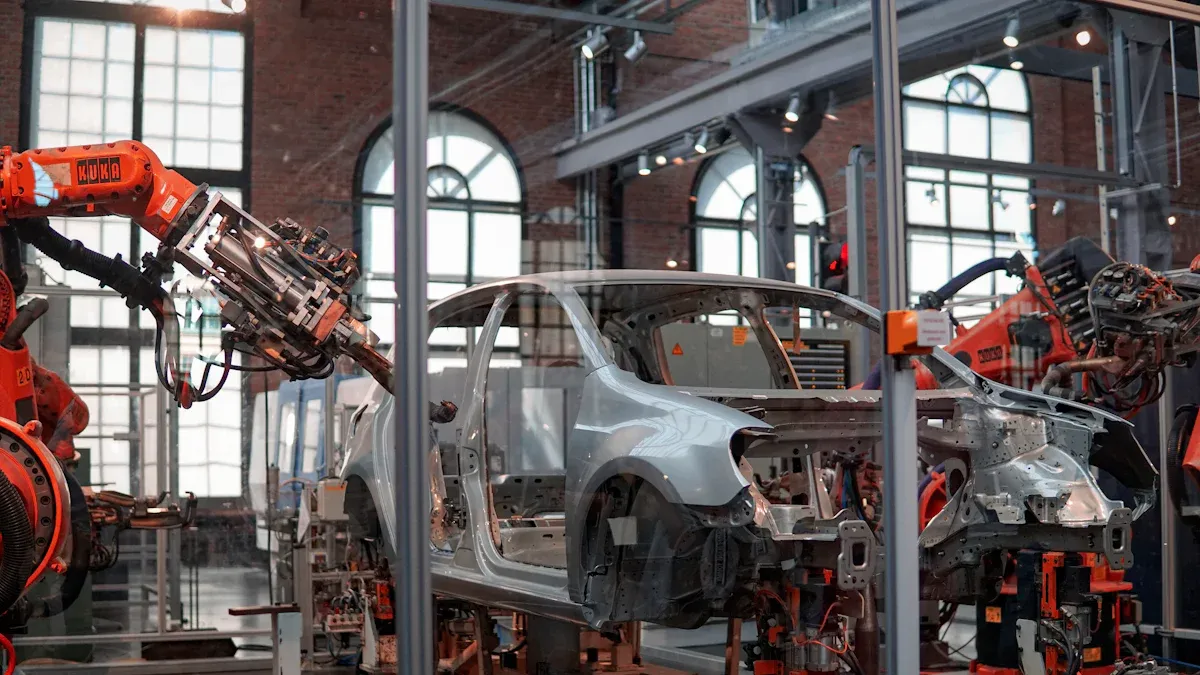
A former holder is a specialized tool that securely holds materials during manufacturing. You rely on it to ensure precision and efficiency in production. Its adaptability supports various processes, from shaping to assembling. By using these tools, you minimize errors and achieve consistent results, even in complex manufacturing tasks.
Key Takeaways
- Former holders are important tools used in making products.
- Use fixed holders for steady tasks and adjustable ones for flexible jobs.
- Buying good former holders lowers mistakes, makes products better, and boosts work speed.
Types of Former Holders

Former holders come in various designs to meet the needs of different manufacturing processes. Each type offers unique benefits, depending on the application.
Fixed Former Holders
Fixed former holders are designed for stability. You use them when precision and consistency are critical. These holders remain in a fixed position during operation, making them ideal for repetitive tasks. For example, they are commonly used in glove production, where the same shape must be maintained throughout the process.
Tip: Choose fixed holders when you need to produce identical items in large quantities.
Adjustable Former Holders
Adjustable former holders provide flexibility. You can modify their position or size to accommodate different materials or shapes. This makes them suitable for processes that require frequent changes, such as plastic molding or metal forming. With adjustable holders, you save time and reduce the need for multiple tools.
- Advantages of adjustable holders:
- Adaptability to various tasks
- Reduced setup time
- Cost savings by using one tool for multiple purposes
Custom-Designed Former Holders
Custom-designed former holders are tailored to your specific needs. Manufacturers create these holders based on the unique requirements of your production process. They are often used in specialized industries like aerospace or automotive manufacturing, where standard tools may not suffice.
Note: Custom holders may have a higher upfront cost, but they offer unmatched precision and efficiency for complex tasks.
Applications of Former Holders in Manufacturing

Former holders play a vital role in various manufacturing industries. Their ability to securely hold materials ensures precision and efficiency across different applications.
Glove Production and Rubber Manufacturing
In glove production, former holders are essential for shaping and maintaining the structure of gloves during the dipping process. You rely on them to hold the glove molds steady as they are dipped into rubber or latex solutions. This ensures uniform thickness and quality in the final product. Rubber manufacturing also benefits from these tools, as they help shape and cure rubber components used in industrial and consumer goods.
Tip: Using a high-quality former holder in glove production can significantly reduce defects and improve product consistency.
Plastic Molding and Extrusion
Plastic molding and extrusion processes require precision to create products with exact dimensions. Former holders provide the stability needed to shape plastic materials during these operations. For example, in injection molding, you use them to hold molds securely while molten plastic is injected and cooled. This prevents warping and ensures the final product meets design specifications.
- Key benefits in plastic manufacturing:
- Improved dimensional accuracy
- Reduced material waste
- Faster production cycles
Metal Forming and Fabrication
Metal forming processes, such as bending, stamping, and welding, demand tools that can withstand high pressure and heat. Former holders designed for metal fabrication provide the durability and stability you need to handle these conditions. They ensure that metal sheets or components stay in place during shaping, reducing errors and improving safety.
Note: Choosing a former holder made from heat-resistant materials can extend its lifespan in metalworking applications.
Aerospace and Automotive Applications
The aerospace and automotive industries require extreme precision and reliability. Former holders are indispensable in these sectors for manufacturing components like engine parts, airframes, and interior fittings. You can use custom-designed holders to meet the stringent quality standards of these industries. Their ability to maintain tight tolerances ensures that every part functions as intended, even under demanding conditions.
- Examples of applications:
- Holding molds for lightweight composite materials in aerospace
- Securing metal parts during automotive assembly
By using former holders in these industries, you can achieve higher efficiency and meet the rigorous demands of modern manufacturing.
Factors to Consider When Selecting a Former Holder
When choosing a former holder, you need to evaluate several factors to ensure it meets your manufacturing needs. The right choice can improve efficiency, reduce costs, and enhance product quality.
Material Compatibility and Durability
The material of the former holder must align with the materials you work with. For example, if you handle high-temperature processes like metal forming, you should select a holder made from heat-resistant materials. For plastic molding, lightweight and corrosion-resistant options may work better. Durability is equally important. A durable holder withstands wear and tear, reducing the need for frequent replacements. This ensures consistent performance over time.
Tip: Always check the material specifications of the holder to match your production environment.
Precision and Tolerance Requirements
Precision is critical in manufacturing. You need a former holder that maintains tight tolerances to ensure your products meet exact specifications. For industries like aerospace or automotive, even minor deviations can lead to significant issues. Adjustable or custom-designed holders often provide the precision required for complex tasks. By choosing a holder with high accuracy, you minimize errors and improve overall quality.
Cost-Effectiveness and Long-Term Value
While upfront cost is a factor, you should also consider the long-term value of the holder. A high-quality former holder may cost more initially but can save money in the long run by reducing downtime and maintenance expenses. Evaluate the lifespan and performance of the holder to determine its true cost-effectiveness. Investing in a reliable tool ensures better productivity and fewer disruptions.
Note: Balancing cost with quality often leads to the best results for your manufacturing process.
Advancements in Former Holder Technology by 2025
Integration of Smart Features for Automation
By 2025, former holders are becoming smarter. You can now find models equipped with sensors and IoT-enabled features that monitor performance in real-time. These smart holders collect data on factors like pressure, temperature, and alignment. This data helps you identify inefficiencies and optimize your production process.
Automation is another key advancement. Smart former holders integrate seamlessly with robotic systems, allowing you to automate repetitive tasks. For example, in glove production, automated holders can adjust their position and shape without manual intervention. This reduces downtime and improves productivity.
Tip: Look for former holders with built-in diagnostics to minimize maintenance and maximize uptime.
Use of Advanced Materials for Enhanced Performance
Manufacturers are using cutting-edge materials to improve the durability and efficiency of former holders. You’ll find holders made from composites, ceramics, and high-performance alloys. These materials resist wear and tear, even in extreme conditions like high heat or corrosive environments.
Lightweight materials are also gaining popularity. They reduce the energy required for operation, making your manufacturing process more sustainable. For instance, aerospace and automotive industries benefit from holders made of lightweight composites that maintain precision without adding unnecessary weight.
| Material | Key Benefits | Applications |
|---|---|---|
| High-performance alloys | Heat resistance and durability | Metal forming and fabrication |
| Composites | Lightweight and corrosion resistance | Aerospace and automotive industries |
| Ceramics | Extreme precision and stability | Plastic molding and extrusion |
Note: Choosing the right material for your former holder can significantly extend its lifespan and improve efficiency.
Customization Through Additive Manufacturing
Additive manufacturing, or 3D printing, is revolutionizing the way former holders are designed. You can now create custom holders tailored to your specific needs. This technology allows you to produce complex shapes and designs that were previously impossible with traditional methods.
Customization through 3D printing reduces lead times and costs. You can quickly prototype and test new designs, ensuring they meet your requirements before full-scale production. For example, in aerospace manufacturing, you can print holders with intricate geometries to handle lightweight composite materials.
Callout: Additive manufacturing empowers you to innovate and adapt to changing industry demands without compromising quality.
A former holder plays a crucial role in modern manufacturing by ensuring precision and efficiency. You rely on these tools to meet the demands of evolving industries. Advancements in materials, automation, and customization continue to enhance their functionality. By adopting these innovations, you can stay competitive and achieve higher productivity.
FAQ
What industries benefit the most from former holders?
Industries like aerospace, automotive, glove production, and metal fabrication rely heavily on former holders. These tools ensure precision, efficiency, and consistency in their manufacturing processes.
How do you maintain a former holder?
Clean the holder regularly to remove debris. Inspect for wear and damage. Use appropriate lubricants or coatings to prevent corrosion and extend its lifespan.
Tip: Follow the manufacturer’s maintenance guidelines for optimal performance.
Can you customize a former holder for unique applications?
Yes, you can customize former holders using advanced methods like 3D printing. This allows you to create designs tailored to specific manufacturing needs.
Note: Customization improves precision and efficiency for specialized tasks.
Post time: Apr-17-2025




